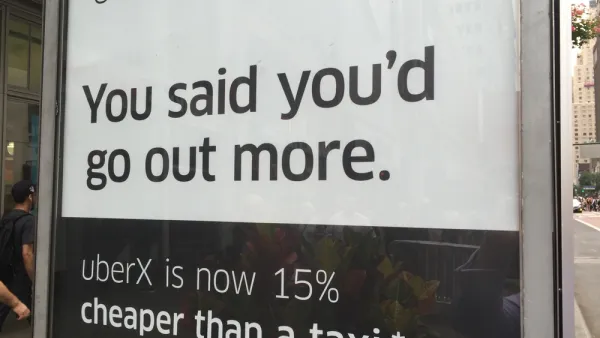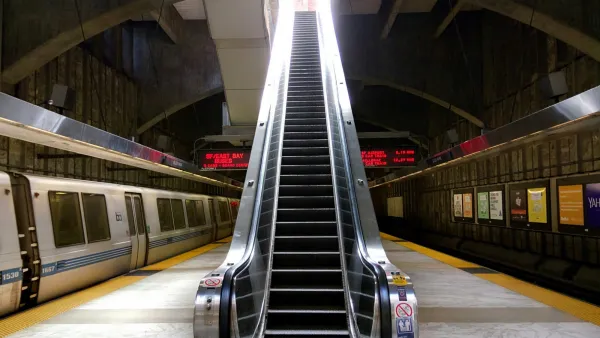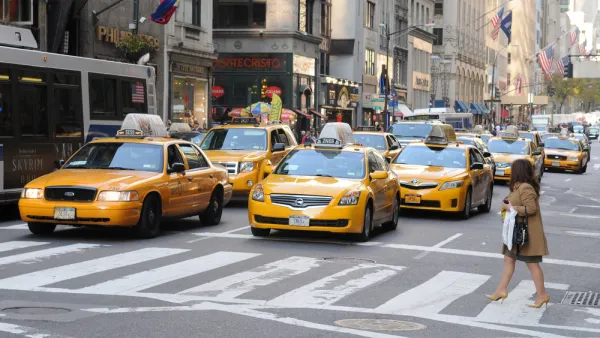Ride-hailing companies have yet to deliver on many of the transportation system improvements that they, and their supporters, have been promising. Streetsblog USA provides a scathing critique of the consequences of widespread ride-hailing.

Angie Schmitt follows a recent "raft" of studies finding negative effects from the widespread adoption of ride-hailing services like Uber and Lyft—the most recent being the news that UCLA students are hailing rides 11,000 times a week just to get around campus.
"It’s becoming more and more clear that Uber and Lyft having some pretty pernicious effects on public health and the environment, especially in some of the country’s largest cities," according to Schmitt.
To better keep track of the kinds of bad news that have been made public regarding ride-hailing companies in recent months, Schmitt offers the following list, with a lot more detail included in the source article:
- They increase driving, a lot.
- They are inefficient (lots of "deadheading" or driving time with no passengers).
- They operate in largest numbers in transit-rich cities and neighborhoods.
- They replace alternative transportation (e.g., walking, biking, transit).
- They hurt transit ridership.
- They reduce political support for public transit.
- They increase traffic fatalities.
- They hoard data.
FULL STORY: All the Bad Things About Uber and Lyft In One Simple List

National Parks Layoffs Will Cause Communities to Lose Billions
Thousands of essential park workers were laid off this week, just before the busy spring break season.

Retro-silient?: America’s First “Eco-burb,” The Woodlands Turns 50
A master-planned community north of Houston offers lessons on green infrastructure and resilient design, but falls short of its founder’s lofty affordability and walkability goals.

Delivering for America Plan Will Downgrade Mail Service in at Least 49.5 Percent of Zip Codes
Republican and Democrat lawmakers criticize the plan for its disproportionate negative impact on rural communities.

Test News Post 1
This is a summary

Test News Headline 46
Test for the image on the front page.

Balancing Bombs and Butterflies: How the National Guard Protects a Rare Species
The National Guard at Fort Indiantown Gap uses GIS technology and land management strategies to balance military training with conservation efforts, ensuring the survival of the rare eastern regal fritillary butterfly.
Urban Design for Planners 1: Software Tools
This six-course series explores essential urban design concepts using open source software and equips planners with the tools they need to participate fully in the urban design process.
Planning for Universal Design
Learn the tools for implementing Universal Design in planning regulations.
EMC Planning Group, Inc.
Planetizen
Planetizen
Mpact (formerly Rail~Volution)
Great Falls Development Authority, Inc.
HUDs Office of Policy Development and Research
NYU Wagner Graduate School of Public Service





























